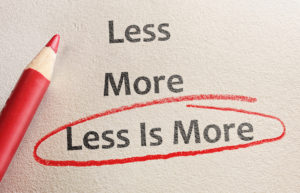Allen Masri
Federal Benefit Consultants
Should You Downsize When You Retire?

If you plan to sell your current home and move to a smaller one after retirement, you may be in for a shock. While it’s tempting to see “downsizing” as an easy way to lower costs in retirement, the new economic reality may make it much more difficult to realize those savings. Home values have gone up nearly 9% in the last year, making the effects of downsizing much less dramatic. In 2020, for example, homeowners aged 65-75 who downsized from an average home valued at $340,000 often ended up purchasing a smaller home costing around $250,000.
These small savings reflect the tight housing inventory and fierce competition for smaller “starter” homes. Retirees seeking to downsize will find themselves competing with first-time homebuyers looking for lower-priced, smaller houses. Also, mortgage rates are ticking slowly upward, making purchasing a new home much more expensive. With the current median home price in the US at over $312,00, downsizing in both cost and square footage may not be easy to achieve.
Does downsizing make sense anymore?
Although moving to a smaller home seems logical for many retirees and pre-retirees, you must do the math first. It’s advisable to include your financial advisor or advisory team when you consider downsizing to ensure it makes sense in the long term.
- Calculate, and re-calculate. If you are taking money from savings or retirement funds to cover the move, look at the long-term impact of those withdrawals on your retirement income. Add all broker fees, increased property taxes, HOA dues, and other costs.
- Don’t forget there are many additional expenses associated with purchasing a home. If it has been some time since you last purchased a home, you may be neglecting to factor in closing costs, real estate agent fees, furnishings and upgrades, moving costs, and repairs.
- Consider the long-term implications if you take a lump sum from your retirement accounts to fund your home. Also, don’t forget to include taxes. Taking an early distribution could also push you into a higher tax bracket, diminishing any savings you’ll get.
- Is your new home in a place you want to be? You’ll probably only downsize once in your life, so it’s essential to choose a place where you’d be OK spending the rest of your life.
- Have you thought through what you’ll need in a home as you age? Your retirement home should accommodate the physical changes that often occur as a person ages. Your replacement home might need to include ramps, stairlifts, walk-in tubs, and other accessories designed to keep you or a loved one self-sufficient and mobile. A house that is too small may not have space to address special needs.
- What additional costs will you incur if you move into a senior community? Is the community near public transportation, or will you have to drive more than usual? Will the HOA rules allow you to have a live-in caretaker if the need arises?
- Can you keep up with landscape maintenance, or will you have to hire someone to help you?
- Is your portfolio balanced to include safe money products, such as annuities and life insurance? These products can help you create predictable income to help cover home-related expenses.
Summing it up.
In the past, downsizing was an effective way for retirees to reduce their monthly expenditures significantly while retaining their independence. However, we currently have an unpredictable housing market made worse by a lack of inventory and speculation, along with inflation and near-zero interest rates. The savings from downsizing, then, are not as dramatic as they have been in previous years. Retirees should consider the long-term effects before deciding to leave their current homes.

Allen Masri
Federal Benefit Consultants
1836 N. Pine Island Rd.
Plantation, Florida 33322
allen.masri@retirevillage.com
(786) 398-7260


Looking For Answers?
Download our Safe Money Guide and learn more about safe retirement options that can help you achieve your retirement goals safely - FREE!

